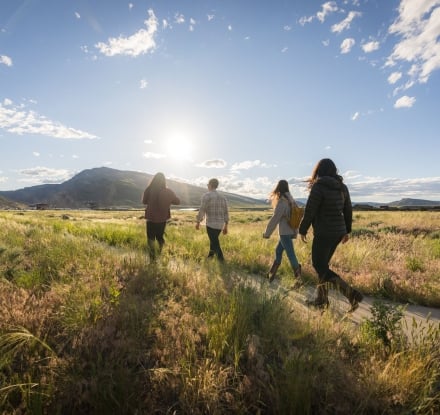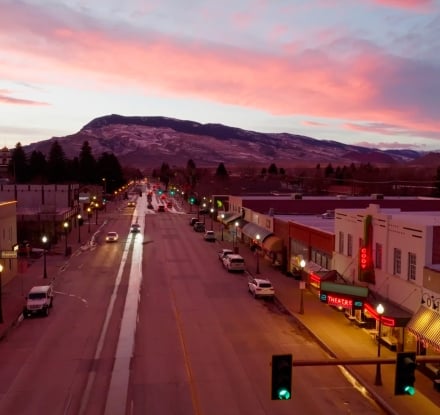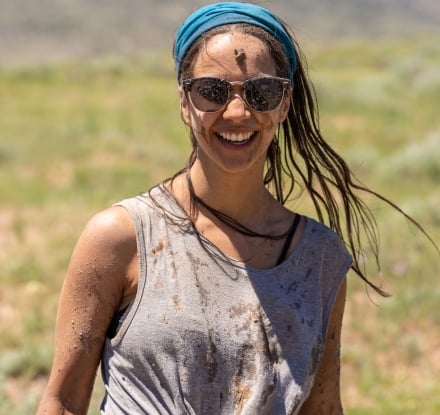
Yellowstone in Black and White
I know why they call it spring fever. I had an awful case of it last week during a series of cloudy, drizzly, colorless days. The whole world outside my window seemed to be cast in shades of gray. Even the emerging yellow crocuses beneath my picture window lost their perky tone, as if they were already giving up the grow after struggling just the previous week to sprout above the hard-packed earth.
For a woman who dreams in color, those long almost-spring days were agony. I wandered about my house pondering whether I should start in on the spring cleaning or appease my morose soul with a book, a fire and an Irish coffee. You know me well enough by now to guess which choice I made. I brewed a fresh pot and settled into my rawhide armchair with a copy of “Ansel Adams: The National Park Service Photographs.”
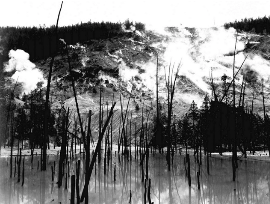
Roaring Mountain
It’s hard to believe the black-and- white stunners for which this photographic genius is known are already 77 years old. As I flipped through the page after photos, I thought of how funny it was that I was wishing for color to lighten up my day while Adams filtered out all color, to reveal a unique aesthetic that would become his signature.Ansel Adams, you might recall, was hired by the U. S. Department of the Interior to help promote interest in the country’s national parks. The year was 1941, and although Japan had not yet attacked Pearl Harbor, many Americans were jittery as they watched the crisis in Europe escalate.
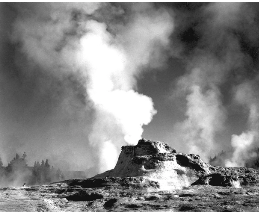
Castle Geyser
Adams was only 40 when he traveled by train to Yellowstone, lugging nearly 300 pounds of camera equipment. He was on an incredibly tight schedule, with marching orders to shoot Yellowstone, then Glacier, Mount Rainier and Crater Lake in just 20 days. But he’d done his homework, including a pre-shoot meeting with William Henry Jackson, who at nearly 100 years old was among the last living souls from the famous Hayden expedition. It was Jackson’s photos of Yellowstone that helped convince the U.S. Congress to designate Yellowstone as the world’s first national park. Adams spent the next several days photographing the park’s iconic natural wonders, including Old Faithful geyser, Roaring Mountain, Castle Geyser, Mammoth Hot Springs, the Firehole River and Yellowstone Lake.
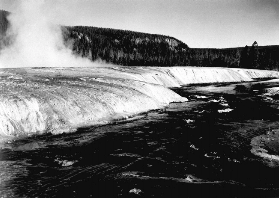
Yellowstone’s Firehole River
World War II brought Ansel Adams’s project to a premature end, but with the little time he had, he managed to create a portfolio of national park photographs that would eventually help inspire post-war enthusiasm for the world’s national parks. And when they did return to the parks, many Americans brought cameras with them so they could themselves attempt to capture the quiet, untouched, black-and-white- and-gray beauty of the natural world that Adams had revealed.

Fishing Cone
Until next time, I’m starting on my spring cleaning and loving life here in Cody Yellowstone.


